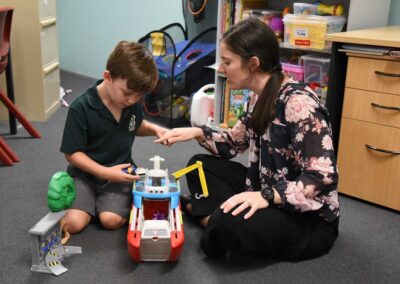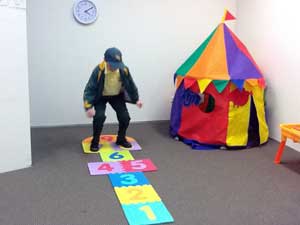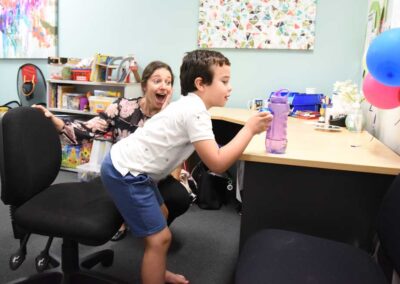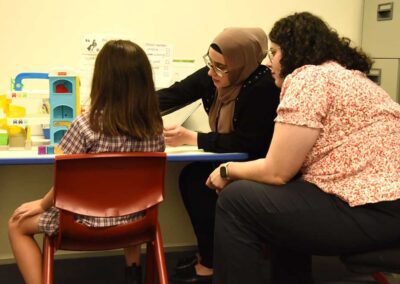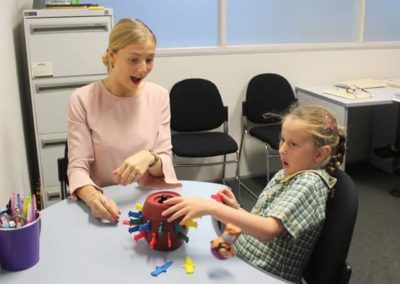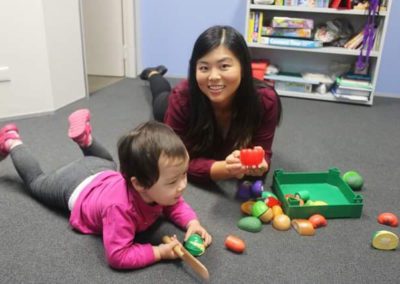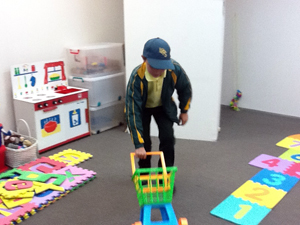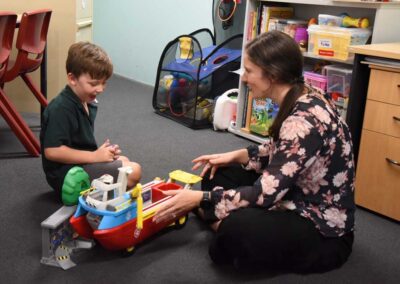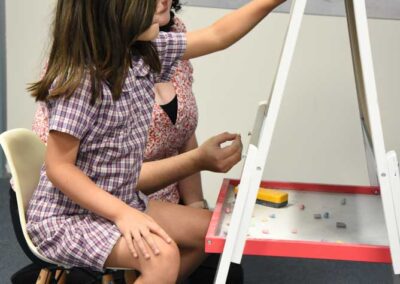Language development doesn’t just happen during story time or structured lessons – it happens everywhere. In fact, some of the richest language-building moments take place during your everyday routines. Whether you’re baking cookies, wrapping a gift, or grocery shopping, each of these moments is filled with opportunities to model language, build vocabulary, and support your child’s communication skills in a natural, meaningful way.
Here’s how you can turn ordinary activities into powerful language-learning experiences.
1. Baking Together: A Recipe for Vocabulary
The kitchen is a language playground. Measuring, mixing, pouring – each step in a baking routine introduces new vocabulary and concepts.
Language opportunities: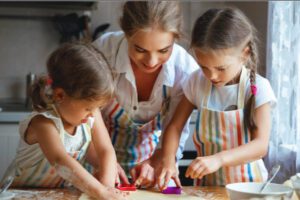
- Action words: stir, pour, mix, crack, roll, sprinkle
- Descriptive words: sticky, sweet, hot, cold, soft
- Sequencing: first, next, then, last
- Following directions: “Can you put the flour in the bowl?” or “Now it’s your turn to mix.”
Tip: Talk out loud while you bake. Even if your child isn’t responding yet, they’re listening and learning. Let them get messy and hands-on – that sensory engagement helps reinforce language, too.
2. Grocery Shopping: A Live Vocabulary Hunt
The grocery store is a real-world classroom full of labels, signs, categories, and choices. Slow down (when you can!) and turn errands into a language adventure.
Language opportunities:
- Labelling: “Look, apples! These are red apples.”
- Categorizing: “Let’s find all the fruits first. Now let’s look for dairy.”
- Making choices: “Do you want the cheddar cheese or the string cheese?”
- Social communication: saying “hi” to the cashier or handing over an item
Bonus: Use a simple picture shopping list your child can follow. This supports early literacy, independence, and expressive language.
3. Getting Dressed: A Daily Chance to Talk
Morning and bedtime routines are packed with vocabulary, turn-taking, and opportunities for your child to make choices and follow steps.
Language opportunities:
- Naming clothing: shirt, pants, socks, zipper
- Describing: warm, fuzzy, tight, too big
- Sequencing and routines: “First your socks, then your shoes.”
- Making choices: “Do you want the blue shirt or the striped one?”
Let your child take part, even if it slows things down – it gives them more chances to talk, listen, and engage.
4. Bath Time: Soapy, Silly, and Speech-y

Water play is soothing and naturally encourages interaction. It’s also a great time to build routines and repeat simple language in a playful setting.
Language opportunities:
- Action words: wash, splash, pour, scrub
- Body parts: toes, tummy, head, arms
- Following directions: “Wash your nose,” or “Put the duck in the water.”
- Songs and rhymes: Singing familiar tunes like “This is the way we wash our hands…”
Routine songs help children anticipate what’s coming next and offer opportunities to fill in the blanks (“This is the way we wash our ___”).
Why Everyday Routines Work
Children learn best through repetition, connection, and meaningful interactions. When language is woven into daily activities, it’s more relevant – and easier to remember. Plus, using routines as your language-building foundation doesn’t require extra time or fancy tools. You’re already doing these things – just add intentional talking.

